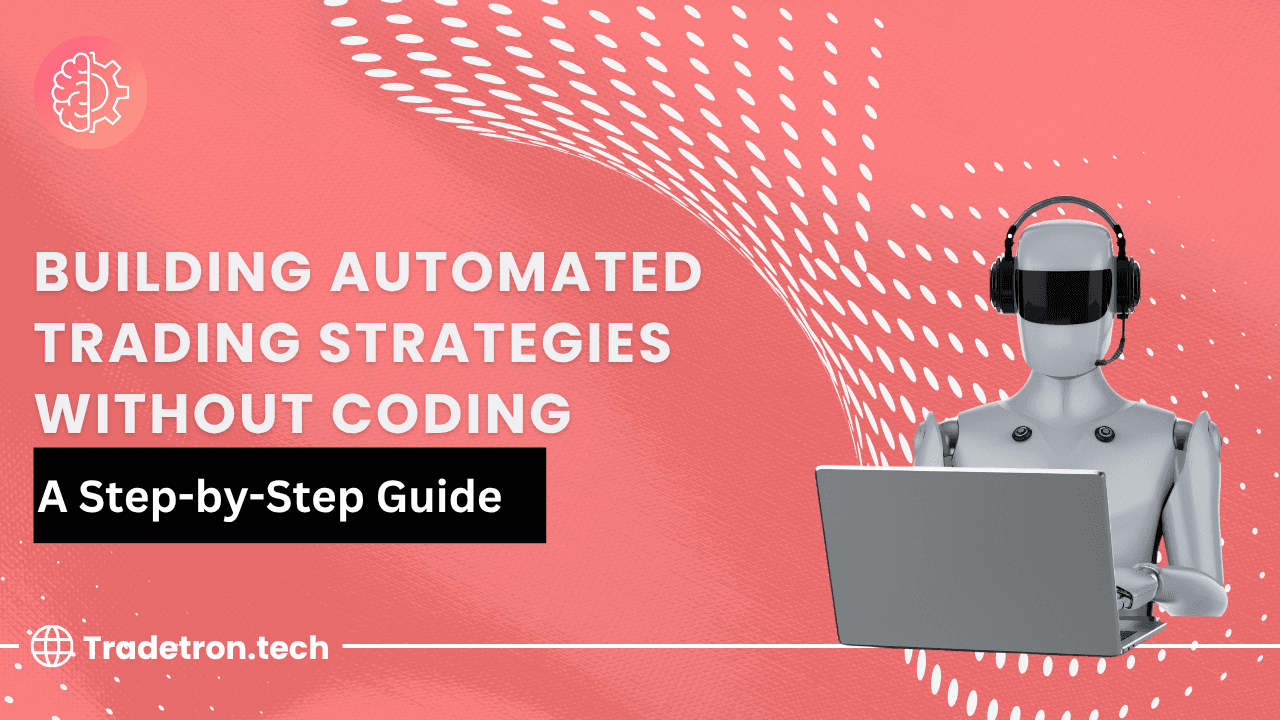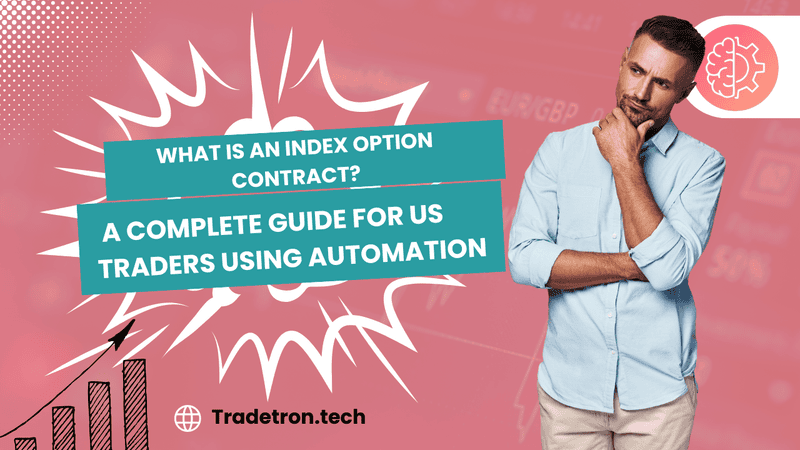The world of automated trading has traditionally been the domain of quantitative analysts and programmers, requiring extensive coding knowledge to develop and implement trading algorithms. However, the landscape has dramatically shifted with the emergence of no-code platforms that democratize algorithmic trading. Tradetron leads this revolution, enabling traders of all backgrounds to build sophisticated automated trading strategies without writing a single line of code.
This comprehensive guide will walk you through the process of creating your first automated trading strategy using Tradetron's intuitive platform, transforming your trading ideas into executable algorithms that work around the clock.

Why Automated Trading Strategies Matter
Automated trading strategies offer compelling advantages over manual trading approaches. They eliminate emotional decision-making, execute trades with precision timing, operate continuously across multiple markets, and can process vast amounts of data instantaneously. Most importantly, they allow traders to backtest strategies thoroughly before risking real capital, providing confidence in their approach.
For retail traders, the barrier to entry has historically been the technical complexity of strategy development. Tradetron removes this obstacle, making professional-grade algorithmic trading accessible to everyone.
Understanding Tradetron's No-Code Approach
Tradetron's revolutionary approach centers on visual strategy building through an intuitive drag-and-drop interface. Instead of learning programming languages, traders work with logical building blocks that represent trading concepts: entry conditions, exit rules, risk management parameters, and position sizing algorithms.
This visual approach mirrors how traders naturally think about strategies, making the transition from manual to automated trading seamless and intuitive.
Step-by-Step Guide to Building Your First Strategy
Step 1: Define Your Trading Concept
Begin by clearly articulating your trading idea. For example: "Buy when a stock's 50-day moving average crosses above its 200-day moving average, and sell when the opposite occurs, with a 2% stop-loss."
Tradetron's strategy builder helps you translate this concept into actionable logic without requiring programming knowledge.
Step 2: Set Up Entry Conditions
Using Tradetron's condition builder, specify when your strategy should enter trades. The platform provides pre-built modules for:
Technical indicators (moving averages, RSI, MACD, Bollinger Bands)
Price action patterns (breakouts, support/resistance levels)
Volume analysis (volume spikes, accumulation patterns)
Time-based conditions (specific trading hours, days of the week)
Simply drag these conditions into your strategy canvas and configure their parameters using dropdown menus and slider controls.
Step 3: Define Exit Rules
Profitable trading requires well-defined exit strategies. Tradetron allows you to create multiple exit conditions:
Profit targets based on percentage gains or absolute values
Stop-loss levels using fixed percentages or trailing stops
Time-based exits after specific holding periods
Technical signal reversals
Each exit condition can be configured independently, creating sophisticated multi-layered exit strategies.
Step 4: Implement Risk Management
Risk management is crucial for long-term success. Tradetron's risk management modules include:
Position sizing based on account equity or risk percentage
Maximum number of simultaneous positions
Daily loss limits and maximum drawdown controls
Correlation limits to prevent overexposure to similar assets
These controls are implemented through simple configuration panels rather than complex coding.
Step 5: Backtest Your Strategy
Before deploying real capital, Tradetron's comprehensive backtesting engine allows you to validate your strategy using historical data. The platform provides detailed performance metrics including:
Total returns and risk-adjusted returns
Maximum drawdown and volatility statistics
Win rate and average trade duration
Month-by-month and year-by-year performance breakdown
This backtesting capability helps refine your strategy parameters and builds confidence in your approach.
Step 6: Paper Trading and Optimization
Tradetron offers paper trading functionality, allowing you to test strategies in real-time market conditions without financial risk. This phase helps identify any issues with order execution, timing, or market condition responses.
During paper trading, you can fine-tune parameters and observe how your strategy performs across different market environments.
Step 7: Deploy and Monitor
Once satisfied with paper trading results, deploy your strategy with real capital. Tradetron provides comprehensive monitoring tools that track:
Real-time performance metrics
Open positions and pending orders
Risk exposure across all strategies
Detailed trade logs and execution reports
Advanced Features for Strategy Enhancement
Dynamic Parameter Adjustment
Tradetron enables strategies that adapt to changing market conditions. Parameters can automatically adjust based on volatility, trend strength, or other market characteristics without requiring code modifications.
Multi-Asset and Multi-Timeframe Strategies
The platform supports strategies that operate across multiple assets simultaneously or combine signals from different timeframes, creating more sophisticated and diversified approaches.
Strategy Combinations
Advanced users can combine multiple individual strategies into portfolio-level algorithms, implementing correlation controls and risk balancing across different approaches.
Best Practices for No-Code Strategy Development
Successful automated strategy development follows several key principles. Start simple with basic concepts before adding complexity. Always backtest thoroughly across different market conditions and time periods. Implement robust risk management from the beginning rather than as an afterthought.
Regular monitoring and periodic strategy review ensure continued effectiveness as market conditions evolve. Tradetron's analytics help identify when strategies may need adjustment or replacement.
The Tradetron Community Advantage
Beyond individual strategy development, Tradetron offers access to a vibrant community of traders sharing strategies, insights, and best practices. This collaborative environment accelerates learning and provides inspiration for new strategy ideas.
Frequently Asked Questions
1. How complex can automated trading strategies become using Tradetron's no-code platform?
Tradetron's visual builder supports highly sophisticated strategies including multi-leg options strategies, portfolio rebalancing algorithms, pairs trading, volatility arbitrage, and complex risk management systems. The platform's modular approach allows for virtually unlimited complexity without requiring programming skills.
2. Can I modify or update my automated trading strategies after they're deployed?
Absolutely. Tradetron allows real-time strategy modification and optimization. You can adjust parameters, add new conditions, modify risk controls, or completely restructure strategies without stopping execution. Changes can be tested in paper trading mode before applying to live strategies.
3. How does Tradetron ensure my automated strategies execute reliably during volatile market conditions?
Tradetron employs robust infrastructure with redundant systems, high-speed connectivity to exchanges, and sophisticated order management. The platform includes fail-safe mechanisms, automatic reconnection capabilities, and emergency stop functions to ensure reliable execution even during extreme market volatility.
4. What types of assets and markets can I trade using Tradetron's automated strategies?
Tradetron supports automated trading across equities, derivatives, commodities, currencies, and indices. The platform integrates with major Indian exchanges and supports international markets, allowing for diversified automated trading portfolios across multiple asset classes and geographies.
5. How can I be confident that my no-code strategy will perform as expected in live markets?
Tradetron provides comprehensive validation tools including extensive backtesting with walk-forward analysis, Monte Carlo simulations, paper trading capabilities, and detailed performance analytics. These tools help ensure strategy robustness before committing real capital, while ongoing monitoring provides continuous performance validation.
Building automated trading strategies without coding is no longer a distant dream but an accessible reality with Tradetron. The platform's intuitive approach, combined with powerful backtesting and risk management capabilities, empowers traders to harness the benefits of algorithmic trading regardless of their technical background. Start your automated trading journey today and discover how Tradetron can transform your trading ideas into profitable, systematic strategies.



 Made with Superblog
Made with Superblog